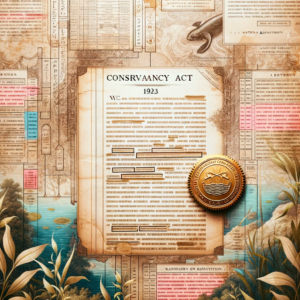I emerged this morning from a month (Six weeks? Two months? I’ve lost track of time.) of writing about the crucial period from 1918-ish to 1931-ish in Albuquerque’s relationship with the Rio Grande.
The period right now takes up four chapters of Ribbons of Green, the book Bob Berrens and I are writing, which is more than we had intended, but in retrospect it seems inevitable.
The railroad changed everything when it arrived in 1880. But change came slowly, as Albuquerque’s leaders bent on building a big American city struggled to solve the collective action problem of managing our relationship with the Rio Grande – especially the provision of drainage (the valley floor where we wanted to build a city was muchly a swamp!) and flood control. Their attempts were caught between competing visions of community identity and values – progressive boosters (mostly but not entirely Anglo) pressing for progressive-era “scientific management” and deeply embedded communities of Hispanic farmers with a lot of “WTF, this isn’t going to work, why are you making me pay for it!” Off to one side stood the indigenous Pueblo communities, fiercely protecting their sovereignty but with a realpolitik born of three centuries’ experience of struggle against colonization.
The clash shaped the contentious birth of the institution created to realize the dream of building a modern city on the valley floor – the Middle Rio Grande Conservancy District. The District’s turbulent origins marked a pivotal point where Albuquerque leaned fully toward the future, embracing both the benefits and costs of trying to engineer its relationship with the Rio Grande. The period has been written about before – Kenneth Orona’s River of culture, river of power : identity, modernism, and contest in the Middle Rio Grande Valley is terrific – but not in the way that we needed. (If this had already been done, there would be no point to Bob and I spending all of this time writing a book, besides how terrifically fun it’s been. Which I suppose is reason enough?)
The period occupies a huge portion of our book because it laid down the institutional foundations of the modern city of Albuquerque’s relationship with the Rio Grande – and in so doing, the institutional foundations of the community itself. But those foundations are obscured by the stuff that came after.
Our exercise was twofold. First, we had to examine what we all (the community of people who ponder such things) think we know about that history. Second, we had to examine the traces of that history found underlying our modern world.
Explaining it as this simple two-step process is a necessary but imperfect description, because it’s a two-way thing. Our understanding of the present informs how we research the past, and our research of the past in turn informs how we re-think the present. Add in the complexity of two thinkers looking at this (Bob and me) and understand it as a tangled process, without clear beginning or end points.
All of that has left traces on the relationship between our modern city and the Rio Grande.
A Bureaucratic Palimpsest
I was talking with a friend about this. “Ah, the old bureaucratic palimpsest!” my friend said.
I admitted ignorance, not knowing what to do with “palimpsest”.
My friend offered a combination of sheepish humility and delight at their use of a liberal arts education.
“A ‘palimpsest'”, they explained, and I paraphrase while quoting “is an object (often a manuscript) that has been written on multiple times, so that the previous layers of writing can still be seen or detected underneath the current layer. So a ‘bureaucratic palimpsest’ would be like the accretion of rules and regulations, layered on top of each other over time, each layer reflecting a different set of priorities or values. It’s a messy, but fascinating, process to try to untangle.”
Messy but fascinating indeed. I’m having the time of my life.


A bureaucratic palimpsest is a wonderful phrase. ONe of the historically most significant palimpsest is the Code of Justinian, a compilation of the 1,000 years of jurisprudence, discovered in a monastery in Amalphi, Italy in 1198. Written in Latin it became the source of Romanization of all European Countries during the 12th Century. El Sabio used it to create the Codigo de las Siete Partidas. published from 1246 to 1253. Which became the law of Spanish colonization and became, palimpsetically, the founding law of New Mexico recognized as the law of the conquerer in M’Intosh v. Johnson in 1823. In the francophone colonies the French law was the Coutume de Paris until the Code of Napolean overwrote it hence the Lousiana legal system.
As to the changes brought about by the railroads beginning in 1880, they were swift. The railroads, AT&SF and the Atlantic Railroad and the gigantic trade they engendered resulted in a rapid shift from subsistence economies to cash economies and the mass migration of people. The great railroad labor camps at Bakersfield led to effective depopulation of our Pueblo communities. They followed the money. Lumber and mining industries sprouted up. Trees were floated down the river to the Sawmill District which was converted to a large lake so the trees could be floated to the sawmill at 12th and I-40. PNM generated electricity from wood chips there and coal from Madrid and Gallup.
It should be noted that palimpsetically speaking during the Middle Ages most writings were on animal skins. Even into the early 20th Century we used animal Skins for maps and writings. The material was called vellums. The very first 1923 maps of the MRGCD were drawn on thin tracing vellum. During the Middle Ages, writing skins were hard to get and scribes and scriveners recycled old skins upon which older texts had been written. Using modern methods, the older texts are now being read and lo and behold in the area of biblical research many very ancient versions of biblical passages are being read.